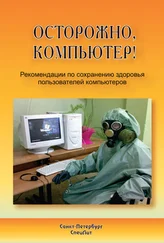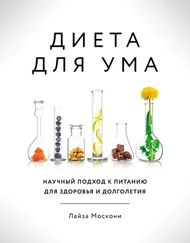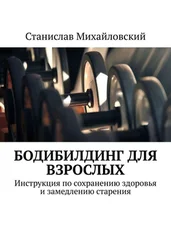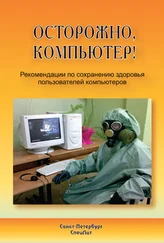6. Biagi E., Nylund L., Candela M., Ostan R., Bucci L., Pini E., Nikkïla J., Monti D., Satokari R., Franceschi C., Brigidi P., De Vos W. Through ageing, and beyond: gut microbiota and inflammatory status in seniors and centenarians. PLoS One. 2010 May 17;5(5): e10667. doi: 10.1371/journal.pone.0010667. Erratum in: PLoS One. 2010;5(6). doi: 10.1371/annotation/df45912f-d15c-44ab-8312-e7ec0607604d. PMID: 20498852; PMCID: PMC2871786.
Глава 3. Что лучше — быстрый или медленный? Как связаны старение и скорость метаболизма?
1. McCarter R., Masoro E. J., Yu B. P. Does food restriction retard aging by reducing the metabolic rate? Am J Physiol. 1985 Apr.;248(4 Pt 1): E488–90. doi: 10.1152/ajpendo.1985.248.4.E488. PMID: 3157325.
2. McCarter R. J., Palmer J. Energy metabolism and aging: a lifelong study of Fischer 344 rats. Am J Physiol. 1992 Sep; 263(3 Pt 1): E448–52. doi: 10.1152/ajpendo.1992.263.3.E448. PMID: 1415524.
3. Hou C., Amunugama K. On the complex relationship between energy expenditure and longevity: Reconciling the contradictory empirical results with a simple theoretical model. Mech Ageing Dev. 2015 Jul; 149:50–64. doi: 10.1016/j.mad.2015.06.003. Epub 2015 Jun 15. PMID: 26086438.
4. Heilbronn L. K., Ravussin E. Calorie restriction and aging: review of the literature and implications for studies in humans. The American Journal of Clinical Nutrition, Volume 78, Issue 3, September 2003, Pages 361–369. doi: 10.1093/ajcn/78.3.361.
5. Redman L. M., Smith S. R., Burton J. H., Martin C. K., Il’yasova D., Ravussin E . Metabolic Slowing and Reduced Oxidative Damage with Sustained Caloric Restriction Support the Rate of Living and Oxidative Damage Theories of Aging. Cell Metab. 2018 Apr 3;27(4):805–815.e4. doi: 10.1016/j.cmet.2018.02.019. Epub 2018 Mar 22. PMID: 29576535; PMCID: PMC5886711.
Глава 4. Гармония молодости связана с гормонами: как повлиять на эндокринную систему, чтобы остановить старение
1. Fahy G. M., Brooke R. T., Watson J. P, et al. Reversal of epigenetic aging and immunosenescent trends in humans. Aging Cell. 2019; 18: e13028. doi: 10.1111/acel.13028.
2. Krantz E., Trimpou P., Landin-Wilhelmsen K. Effect of Growth Hormone Treatment on Fractures and Quality of Life in Postmenopausal Osteoporosis: A 10-Year Follow-Up Study. J Clin Endocrinol Metab. 2015 Sep;100(9):3251–9. doi: 10.1210/jc.2015–1757. Epub 2015 Aug 27. PMID: 26312576; PMCID: PMC4570174.
3. Wideman L., Weltman J. Y., Hartman M. L., Veldhuis J. D., Weltman A. Growth hormone release during acute and chronic aerobic and resistance exercise: recent findings. Sports Med. 2002;32(15):987–1004. doi: 10.2165/00007256–200232150–00003. PMID: 12457419.
4. American Physiological Society. Varying Weight Training Intensity Increases Growth Hormone In Women. ScienceDaily. ScienceDaily, 4 December 2006. https://www.sciencedaily.com/releases/2006/12/061201105951.htm.
5. Berk L. S., Tan S. A., Fry W. F., Napier B. J., Lee J. W., Hubbard R. W., Lewis J. E., Eby W. C. Neuroendocrine and stress hormone changes during mirthful laughter. Am J Med Sci. 1989 Dec;298(6):390–6. doi: 10.1097/00000441–198912000–00006. PMID: 2556917.
Глава 5. Вопреки менопаузе: как образ жизни помогает обмануть гормоны
1. Leyden E., Hanson P., Halder L., et al. Older age does not influence the success of weight loss through the implementation of lifestyle modification. Clin Endocrinol (Oxf). 2021; 94: 204–209. doi: 10.1111/cen.14354.
2. Stensvold D., Viken H., Steinshamn S. L., Dalen H., Støylen A., Loennechen J. P., et al. Effect of exercise training for five years on all cause mortality in older adults-the Generation 100 study: randomised controlled trial. BMJ. 2020 Oct 7;371: m3485. doi: 10.1136/bmj.m3485. PMID: 33028588; PMCID: PMC7539760.
3. Miller C. R., Wactawski-Wende J., Manson J. E., Haring B., et al.; WHI Investigators*. Walking Volume and Speed Are Inversely Associated with Incidence of Treated Hypertension in Postmenopausal Women. Hypertension. 2020 Nov;76(5):1435–1443. doi: 10.1161/HYPERTENSIONAHA.120.15839. Epub 2020 Sep 28. PMID: 32981366; PMCID: PMC7544673.
4. Gunnarsson T. P., Ehlers T. S., Baasch-Skytte T., Lund A. P., Tamariz-Ellemann A., Gliemann L., Nyberg M., Bangsbo J. Hypertension is associated with blunted NO-mediated leg vasodilator responsiveness that is reversed by high-intensity training in postmenopausal women. Am J Physiol Regul Integr Comp Physiol. 2020 Dec 1;319(6): R712-R723. doi: 10.1152/ajpregu.00170.2020. Epub 2020 Oct 14. PMID: 33074013.
5. Jain P., Bellettiere J., Glass N., LaMonte M. J., et al. The Relationship of Accelerometer-Assessed Standing Time with and Without Ambulation and Mortality: The WHI OPACH Study, The Journals of Gerontology: Series A, Volume 76, Issue 1, January 2021, Pages 77–84. doi: 10.1093/gerona/glaa227.
6. Nakanishi M., Yamasaki S., Nishida A., Richards M. Midlife Psychological Well-Being and its Impact on Cognitive Functioning Later in Life: An Observational Study Using a Female British Birth Cohort. J Alzheimers Dis. 2019;72(3):835–843. doi: 10.3233/JAD-190590.
7. Bondarev D., Sipilä S., Finni T., et al. The role of physical activity in the link between menopausal status and mental well-being. Menopause. 2020;27(4):398–409. doi: 10.1097/GME.0000000000001490.
Глава 6. Эпифиз — центр управления молодостью
1. Reiter R. J., Rosales-Corral S. A., Tan D. X., Acuna-Castroviejo D., Qin L., Yang S. F., Xu K. Melatonin, a Full Service Anti-Cancer Agent: Inhibition of Initiation, Progression and Metastasis. Int J Mol Sci. 2017 Apr 17;18(4):843. doi: 10.3390/ijms18040843. PMID: 28420185; PMCID: PMC5412427.
2. B astos Jr. M., Bastos P., Paez L., Souza E., et al. (2020). «Seat of the soul»? The structure and function of the pineal gland in women with alleged spirit possession — Results of two experimental studies. Brain and Behavior. doi: 10.1002/brb3.1693.
3. Bastos M. A. V. Jr., Oliveira Bastos P. R. H., Portella R. B., Soares L. F. G., Conde R. B., Rodrigues P. M. F. Jr., Lucchetti G. Pineal gland and schizophrenia: A systematic review and meta-analysis. Psychoneuroendocrinology. 2019 Jun;104:100–114. doi: 10.1016/j.psyneuen.2019.02.024. Epub 2019 Feb 25. PMID: 30831343.
4. Fernández Vázquez G., Reiter R. J., Agil A . Melatonin increases brown adipose tissue mass and function in Zücker diabetic fatty rats: implications for obesity control. J Pineal Res. 2018 May;64(4): e12472. doi: 10.1111/jpi.12472. Epub 2018 Mar 25. PMID: 29405372.
5. Brazão V., Santello F. H., Colato R. P., Duarte A., Goulart A., Sampaio P. A., Nardini V., Sorgi C. A., Faccioli L. H., do Prado J. C. Jr. Melatonin down-regulates steroidal hormones, thymocyte apoptosis and inflammatory cytokines in middle-aged T. cruzi infected rats. Biochim Biophys Acta Mol Basis Dis. 2020 Nov 1;1866(11):165914. doi: 10.1016/j.bbadis.2020.165914. Epub 2020 Aug 6. PMID: 32768678; PMCID: PMC7406476.
6. Nam K. I., Yoon G., Kim Y. K., Song J. Transcriptome Analysis of Pineal Glands in the Mouse Model of Alzheimer’s Disease. Front Mol Neurosci. 2020 Jan 9;12:318. doi: 10.3389/fnmol.2019.00318. PMID: 31998073; PMCID: PMC6962250.
7. Hossain M. F., Uddin M. S., Uddin G. M. S., Sumsuzzman D. M., Islam M. S., Barreto G. E., Mathew B., Ashraf G. M. Melatonin in Alzheimer’s Disease: A Latent Endogenous Regulator of Neurogenesis to Mitigate Alzheimer’s Neuropathology. Mol Neurobiol. 2019 Dec;56(12):8255–8276. doi: 10.1007/s12035–019–01660–3. Epub 2019 Jun 17. PMID: 31209782.
Читать дальше
Конец ознакомительного отрывка
Купить книгу
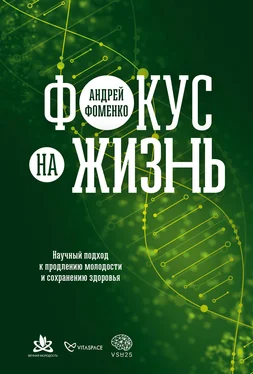

![Шон Янг - Привычки на всю жизнь [Научный подход к формированию устойчивых привычек]](/books/23939/shon-yang-privychki-na-vsyu-zhizn-nauchnyj-podhod-k-fo-thumb.webp)


